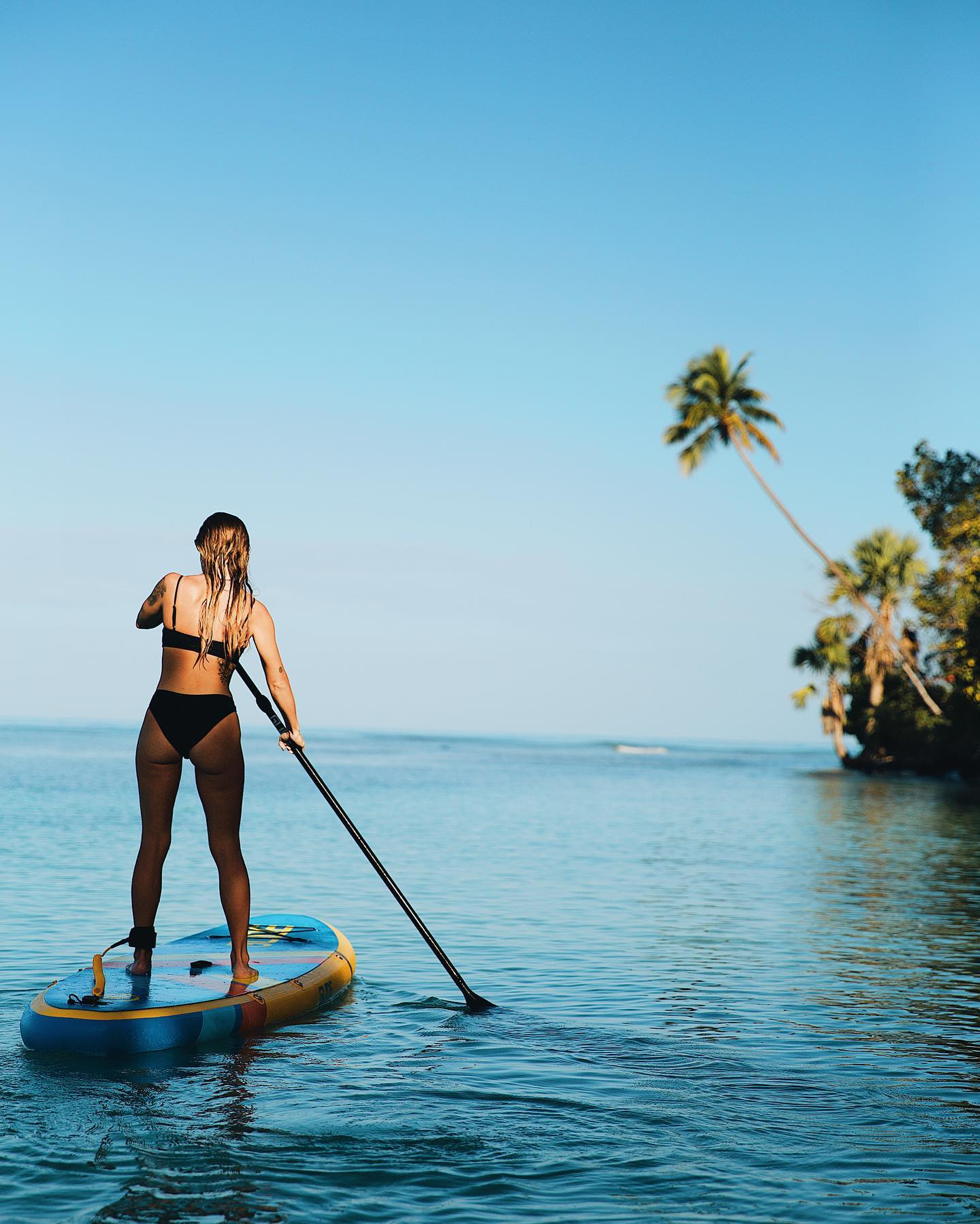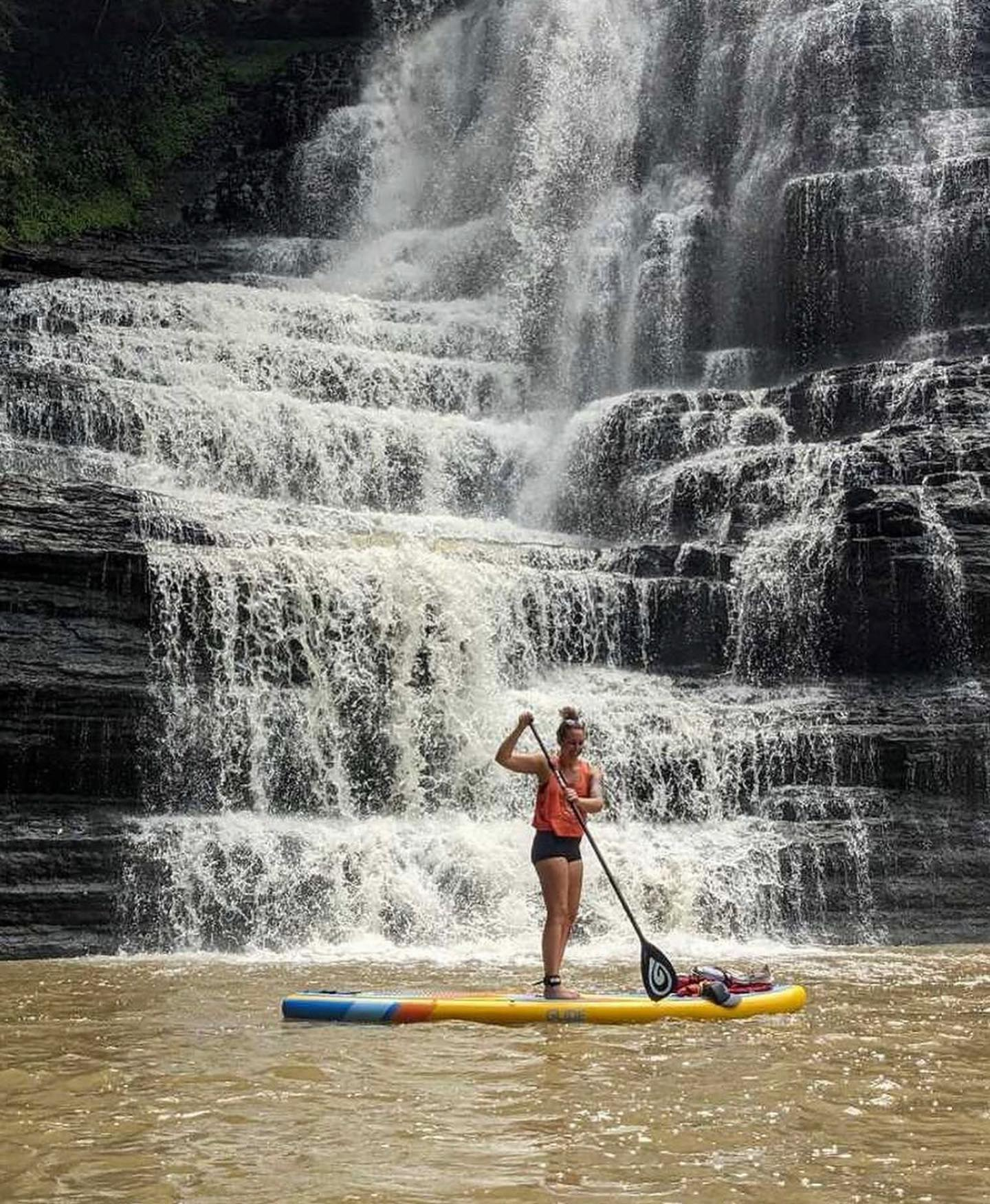
How to Master the Sweep Stroke on your Paddleboard
Key Highlights:
- The Essentials of the Sweep Stroke: Learn the key components that make the sweep stroke an indispensable technique for every paddle boarder.
- Sweep Stroke Variations: Discover how mastering both the standard and reverse sweep strokes can offer greater flexibility and control on the water.
- Step-by-Step Breakdown: From the setup to recovery, each phase of the sweep stroke is detailed for clear understanding and practice.
- Practical Tips for Mastery: Emphasize the importance of form, utilizing the right gear, and prioritizing safety while learning and perfecting the sweep stroke.
- Board Selection Guidance: Insights on how choosing the right paddle board, whether inflatable or solid, can significantly impact your ability to master the sweep stroke efficiently.
- Beyond the Sweep Stroke: An introduction to other essential paddling techniques to further improve your paddle boarding experienc
Introduction
Stand up paddle boarding is a sport that continues to grow in popularity due to its accessibility, fun, and versatility. Whether it's on a solid paddle board or an inflatable paddle board, learning and mastering the sweep stroke is a critical aspect of the sport. The sweep stroke allows you to easily change direction and maneuver your paddleboard, making your experience on the water more enjoyable. This article will guide you through the process of mastering the sweep stroke on your paddleboard, ensuring you have the technique down pat for your next adventure.
Understanding the Sweep Stroke on a Paddle Board
The sweep stroke is a crucial paddle boarding technique that allows paddlers to turn their boards quickly and efficiently. This technique is especially useful when you need to change direction swiftly, whether you're racing, avoiding obstacles, or navigating through waves.
Sweep Stroke Variations
As you continue to hone your sweep stroke skills, it's worth exploring some of its variations. One such variation is the reverse sweep stroke. This technique is essentially the mirror image of the standard sweep stroke and is performed on the opposite side of the board. A reverse sweep stroke can be incredibly useful when you need to make tighter turns or adjust your course in a specific direction.
Breakdown of the Sweep Stroke
Mastering the sweep stroke involves understanding its different components. The sweep stroke consists of four main parts: the setup, the catch, the draw, and the recovery.
-
Setup: Stand in the center of your paddle board with your feet about hip-width apart for stability. Hold your paddle with one hand at the top of the handle and the other halfway down the shaft.
-
Catch: Submerge the blade of your paddle into the water at an angle, next to the nose of your paddle board.
-
Draw: Sweep the paddle out and away from the board in a wide arcing motion. Make sure to twist your body and use your core for more power and control.
-
Recovery: Lift the paddle out of the water once it reaches the tail of your board, and return it to the front for the next stroke.
Tips for Mastering the Sweep Stroke

Practice Your Form
Proper form is critical to mastering the sweep stroke. Ensure your back is straight, your knees are slightly bent for balance, and your feet are firmly planted on the deck of the board. Remember to engage your core and use your body's rotation to power the stroke, not just your arms.
Utilize the Right Gear
Using the right gear can make a significant difference in your ability to execute the sweep stroke efficiently. For example, a lightweight carbon fiber paddle can offer better control and lessen fatigue, making it easier to perform the sweep stroke.
Safety Considerations
When learning new techniques like the sweep stroke, safety should always be a priority. Be sure you are in a safe location with calm waters, away from other paddlers, swimmers, or obstacles. Always wear a personal flotation device and use a paddleboard leash for added safety.
Choosing the Right Paddleboard
The paddleboard you use can also significantly influence your ability to master the sweep stroke. The dimensions of your board, such as its length and width, affect the board's stability and how easily it turns. For beginners, a wider and longer board offers more stability and can make it easier to learn the sweep stroke. More advanced riders might opt for shorter boards that allow for faster and sharper turns.
Other Helpful Techniques
Apart from the sweep stroke, there are other paddling techniques that you can master to improve your paddle boarding skills. The forward stroke is used for propelling your board straight ahead, while the reverse stroke can help you slow down or move backward. Learning these strokes and knowing when to use each one will enhance your efficiency and maneuverability on the water, making your paddleboarding experience more enjoyable.
Final Thoughts

Mastering the sweep stroke is an essential skill for every paddleboard enthusiast. This technique enhances your control over your paddle board, enabling you to turn swiftly and maneuver your board with ease. With the right gear, correct form, and plenty of practice, you'll be performing efficient sweep strokes in no time, enhancing your overall paddleboarding experience. No matter if you're on an inflatable paddle board or a rigid board, the sweep stroke is an invaluable tool in your paddling repertoire.
Remember, every paddler's journey is unique. Don't be discouraged if you don't get it right the first time. Stay patient, keep practicing, and most importantly, have fun out on the water!


